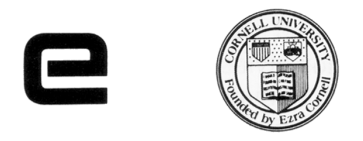Spring 1988 // Volume 26 // Number 1 // Research in Brief // 1RIB3
Image: Creating a Unique and Unified One for Extension
Abstract
What is Extension's current image with elected officials, clientele, media, and the general public? Is that image accurate and up to date? Does the image reflect our current mission...to meet the educational needs of rural and urban citizens by delivering up-to-date research generated knowledge from the land-grant university and the United States Department of Agriculture? Or are we seen as a folksy, fragmented agency that distributes recipes and agricultural bulletins to rural audiences.
Extension can learn how to shape its image from recent marketing research that has been conducted in the private sector. Corporate leaders are recognizing the importance of marketing their companies as well as their products. A recent study conducted by Anspach, Grossman and Portugal, Inc. (a New York-based public relations firm) found that over 2,000 companies changed their names in the last two years. The researchers concluded that the name changes were an attempt to create a new, unifying image. As Elaine Silverstein (vice-president of Silverstein & Partners Advertising) put it, "The divisions are disappearing. Sophisticated corporations now realize the importance of a unified, strategic, communication plan."1
The Burroughs Corporation, a $5 billion dollar Detroit-based supplier of office and data-processing products, provides an example of a new corporate identity program. "We were projecting a mom-and-pop shop image," recalls Jeanette Lerman, vice-president of corporate communications. "We're located in 100 countries around the world, and each division had created its own identity. The net result was that the population at large didn't recognize that Burroughs was as large and diverse as it really is." The logic behind the name change was immediately apparent to everyone. We're now projecting the image of a unified, global corporation."2
Does Extension project the image of a unified national research-based educational system backed by 50 land-grant universities and the USDA or does the public see us as a small department within county government or an independent nonprofit organization?
Research conducted by Dudley, Anderson and Yutzy points to the importance of creating a unique organizational identity. The study found that of the 78 chief executive officers of America's largest corporations, 93% felt that a unique organizational identity was either essential or important. Organizational identity was defined as the company's overall definition, direction, and distinctiveness as perceived by its various publics.3
In light of these two research studies, we need to look at the various ways Extension is communicated - "Extension Service," "Agricultural Program," "Cooperative Extension," "4-H," "Brown County Cooperative Extension," etc. Extension's identity can be further clouded by vague logos, and the absence of clear, well-designed outreach material outlining Extension's definition, direction, and distinctiveness. Its program areas such as 4-H should have two goals in their marketing efforts: (1) to promote their own identity and (2) to tie into the Extension organizational identity.
New York addressed these issues in their new marketing effort. Before the marketing program, a statewide survey indicated that Extension was projecting numerous images, phones were being answered 12 different ways, and outreach materials weren't consistent. A new name, logo, outreach materials, and training program were developed to project a unified, consistent, and unique image.
The marketing committee recommended the new statewide name become Cornell Cooperative Extension, followed by the county name. Cornell was included to identify the state land-grant college, Cooperative Extension was included to identify the national system, and the county was included to identify the local funding partner. The program areas (4-H, etc.) were asked to display the new name prominently along with their own name on all outreach material. A vague graphic "E" logo was replaced by the Cornell University emblem:

The logo ties Extension visually to the land-grant university. Appropriate outreach materials have been developed to promote the new image, including a marketing manual, mission statement, descriptive handouts, and signs.
New York, Oregon, North Dakota, Montana, Minnesota, and many other states are developing comprehensive unifying marketing efforts. The actual choice isn't whether to practice marketing or not, but whether to practice it through a planned, consistent approach or through an unplanned, fragmented approach. Extension's future may depend on this decision.
Footnotes
1. Jeffrey L. Kovach, "Corporate Identity: Programs Shed Artsy Image, Stress Unification," Industry Week (August 19, 1985), pp. 21-22.
2. Ibid.
3. C. K. Lebrman, "Corporate Reputations: Survey Results," Public Relations Journal (December 1986), p. 16.
